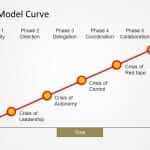This website uses cookies so that we can provide you with the best user experience possible. Cookie information is stored in your browser and performs functions such as recognising you when you return to our website and helping our team to understand which sections of the website you find most interesting and useful.
Raise the EQ of Your Organization

EQ is emotional intelligence, or how smart we are with the human connection – in other words, how effectively we manage ourselves and our relationships. In fact, in the workplace, EQ is more than twice as predictive of performance than IQ. And 80-90% of the professional competencies that differentiate top performance are related to emotional intelligence.
Study after study has proven the benefits of EQ. For companies that have implemented training on emotional intelligence, they have seen phenomenal returns on their investment. Thousands to millions of dollars saved, through increased productivity, increased sales, improved customer service, and better decision making.
Some of the return on investment has ranged as high as 1000%.
The power of emotional intelligence makes sense. After all, any organization is the coordinated efforts of a group of people, trying to meet the needs of another group of people, the customers.
Every organization achieves its goals through a series of daily conversations, interactions, and decisions. Each of these involves the humans and the more emotionally intelligent they are, the more effective they will be on every level.
In addition to developing your own EQ and those on your team, you can help your organization develop its emotional intelligence too. But how do you do this when an organization is a thing, not a person?
It’s all about the people. An organization’s EQ is always a function of the emotional intelligence of the people holding key leadership positions.
If your top leadership is not emotionally intelligent, you’ll need to begin with raising their consciousness about the value of EQ. This is a process of education and persuasion. Luckily, there’s lots of good data out there on the benefits of emotional intelligence and several companies have publicly shared the ROI they have seen.
But first, find your tribe. I recommend that you work with other emotionally intelligent people to carry this message forward together. Strategize about how and when you can raise awareness, and create a plan that you intentionally execute together.
It may take some time, but you’ll be able to make a strong business case for the benefits of developing more emotional intelligence in your organization, especially if you leverage key metrics that matter to your top executives.
If you’re lucky, your top executives already have high EQs and are committed to leading with emotional intelligence, driving it throughout the organization. If you have buy in at the top, then your focus will be assessing where the organization needs to improve.
No matter how receptive your leaders are, the following strategies can help you make a sound case for focusing on emotional intelligence.
First, identify areas that need attention. Perhaps your organization struggles with conflict, or could enhance its appreciation of diversity. Maybe a few key leaders need to develop their confidence or leadership skills, or worse, you are losing some of your top talent. The goal is to have a frank and honest look at what’s not working for the purpose of finding ways to improve.
Next, propose a plan for raising your organization’s EQ. Focus on the areas you identified and design some action steps for addressing the issues. Research has shown that emotional intelligence can be learned so consider how you can leverage training and coaching to help people improve.
In my years of consulting, I have helped organizations implement EQ training and it always proves to be the most powerful in terms of changing the culture. When managers are more emotionally intelligent, they create better engagement among the employees. When teams have higher EQ, they increase their collaboration and innovation as well as make better decisions. All good stuff.
Your proposal will be strongest if you can find clear data that supports your analysis and can calculate concrete ROI on implementing your ideas. And you’ll want to partner with other EQ leaders to create momentum for the proposal. Some well placed advocates can do wonders for creating needed change.
Third, take a snapshot before you implement the plan. This will serve as your measuring stick against which you can show progress. Gather some meaningful data about the current status of the issue you’re tackling. That way, you can demonstrate the effects of your efforts.
Fourth, focus on one thing at a time. You might be tempted to implement several sweeping changes at once. While this can certainly bring about change, it will be harder later to know which change created the best results. Certainly be strategic about the order you roll things out, but do them one at a time. You’ll gain more credibility if you can confidently demonstrate positive results, and this will create more momentum for the next stage of your plan.
Finally, demonstrate your successes with statistics and stories. Collect both anecdotal evidence and quantitative data to show the results of your plan. I have found that it’s most effective to use them together. Show some statistical data and then demonstrate it with a quote or story from a real person. People naturally connect to the human experience–using stories will help you bring your success to life and also role model emotional intelligence.
When you raise the EQ of an organization (whether it's a business, school, non-profit or government agency), the culture is changed for the better. People are more enlivened and willing to work hard to help the organization succeed. It's impossible to put a price tag on that.
Learn more by watching my online course Leading with Emotional Intelligence, or any of my other six courses, at lynda.com.
Related Blogs
JOIN OUR COMMUNITY
Be the first to know of Dr. Britt Andreatta's latest news and research.






